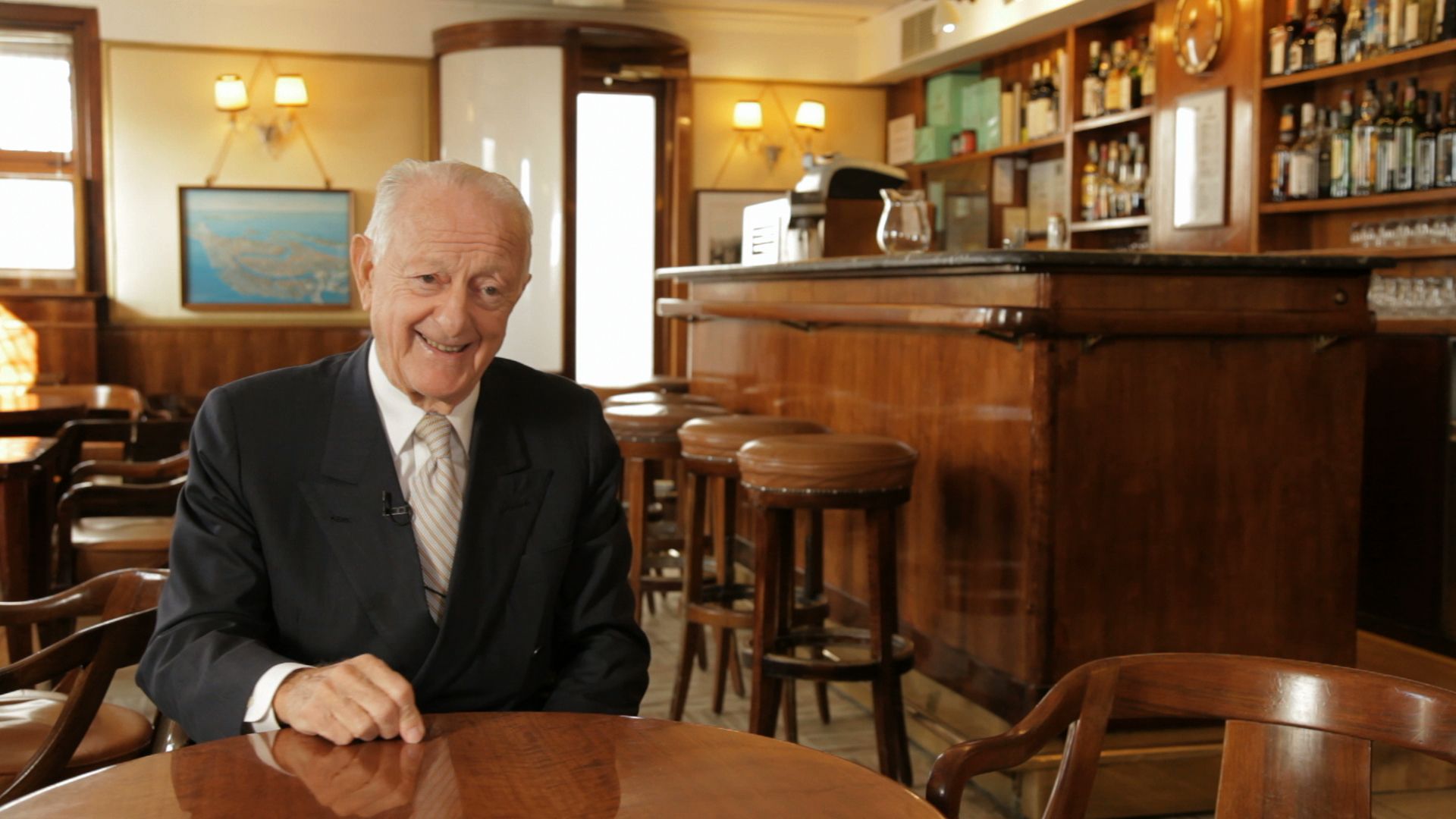Title: Harry’s Bar
Director: Carlotta Cerquetti
Genre: Documentary
“You have never been to Venice if you haven’t gone to Harry’s Bar”, is the statement made by Arrigo Cipriani’s most faithful clients (Naomi Campbell). Indeed it is true, because going to the bar is not just the place that welcomes the worldwide cream of the crop. It’s a place drenched with history, to the extent that the Italian Ministry for Cultural Affairs declared it a national landmark in 2001.
The Bar would have never come to life had it not been for Giuseppe Cipriani, when he emigrated to Germany in the early 1900s and returned to Italy just before World War One, to work at fifteen years old in a pastry shop. In a couple of years he became a pastry chef. By the time of the late 20s he was a bartender in Venice, during the summer at Hotel Europa and in the winter he would work in San Remo or any place in Europe where the winter was mild. In 1928, when he was working at Europa Hotel, he had three customers who were the best customers: a noble aunt, with her gigolo and her nephew. One day the three quarrelled, so the aunt left with the gigolo leaving the nephew behind, Harry Pickering.
Giuseppe Cipriani asked Mr Pickering if he needed anything and the young man answered he needed money to pay the bill and return to the States. Cipriani lent him something like 10.000 Lira, which was a lot of money at the time, and had no clue of who this man was. Two years later Mr Pickering returned to Venice with the money he borrowed and some more to allow Cipriani to open a bar.
The location was found by Cipriani’s wife: an old warehouse where they would keep ropes for the navy and where the “calle” [Venetian narrow street] had no bridge to connect it to San Marco Square: it was at a dead-end. That was what Cipriani wanted: a place where customers would come because they had a motivation to come, not because they were just passing by. Thus the venue was designed as a hotel bar, and amazingly enough it opened in the middle of the American crisis.
In the 30s Venice had all the European aristocracy that would meet there. Ever since it’s openingHarry’s Bar welcomed the worldwide jet-set. One day there were four kings having lunch together, at different tables. Artists, poets, literates such as Orson Wells, Truman Capote, Ernest Hemingway, Charlie Chaplin, Henry Fonda, Georges Braque, and Woody Allen, can recollect the homely atmosphere that can always be found at Harry’s Bar.
Carlotta Cerquetti’s documentary exquisitely collects all the historical footage that retraces the story of the bar, and combines it with interviews where clients and members of the Cipriani family talk about the “Cipriani experience.” It is a philosophy that Giuseppe has bequeathed to his son Arrigo – this latter often jokes about being the only person named after a bar. Had it not been for the fascist regime – which banned foreign names – Arrigo would be called Harry.
Today the Cipriani dynasty has enhanced the legacy of the man who helped Mr Pickering, also through another Giuseppe: the son of Arrigo, who opened several Cipriani restaurants and bars in NY and around the world. Today the family has 21 restaurants around the globe.
When Arrigo Cipriani is asked what is the secret of Harry’s Bar success, he replies it’s all about “Complex simplicity.” The shape of the chairs, tables, cutlery and furniture have been selected with apparent casualty. In truth it is all understatement, so that the client can feel cosy and pampered. All customers are equals once you cross the door of the Harry’s Bar. Every one lives the spirituality of luxury, which Arrigo Cipriani defines as the freedom to return to the actual essence of things.
Puff Daddy rightly said “Harry’s Bar is like Studio 54 without the drugs and without the music.” No wonder Harry’s Bar is as much a part of the Venice myth as the canals, gondolas and the Rialto Bridge.
Technical: B+
Story: A
Overall: A-
Written by: Chiara Spagnoli Gabardi

